SGR 1806-20: The most violent explosion in Milky Way
|
The remarkable high-energy transients known as soft gamma-ray repeaters (SGRs) are located in our Galaxy and originate from neutron stars with intense magneic fields (~10^{15} G), called magnetars. On 27 December 2004, a giant flare with a fluence exceeding 0.3 erg/cm^2 was detected from SGR 1806-20. It was so far the brightest flare from a soft gamma ray repeater. It was detected by INTEGRAL, RHESSI, Wind Spacecraft, SWIFT, GMRT, VLA, ATCA etc. telescopes. The ejected particles moving with very high speed hit the surrounding matter and generate synchrotron emission due to the relativistic electrons moving in a magnetic field. To trace this synchrotron emission, we began a monitoring programme from 0.2 to 250 GHz. This fetched two very important results. One, we had a lowest frequency detection of a SGR every at 235 MHz bands. Second, a high-resolution 21-cm radio spectrum traces the intervening interstellar neutral hydrogen clouds. |
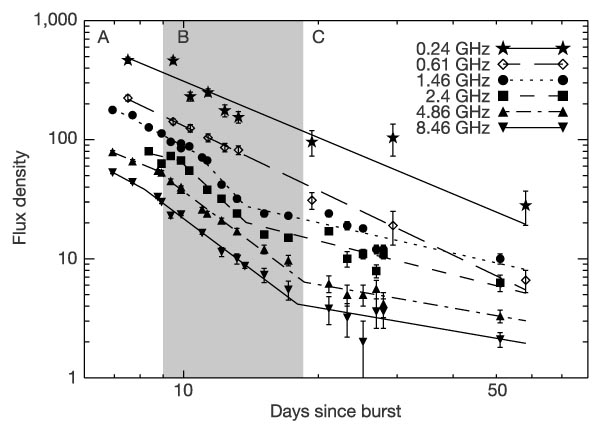
|
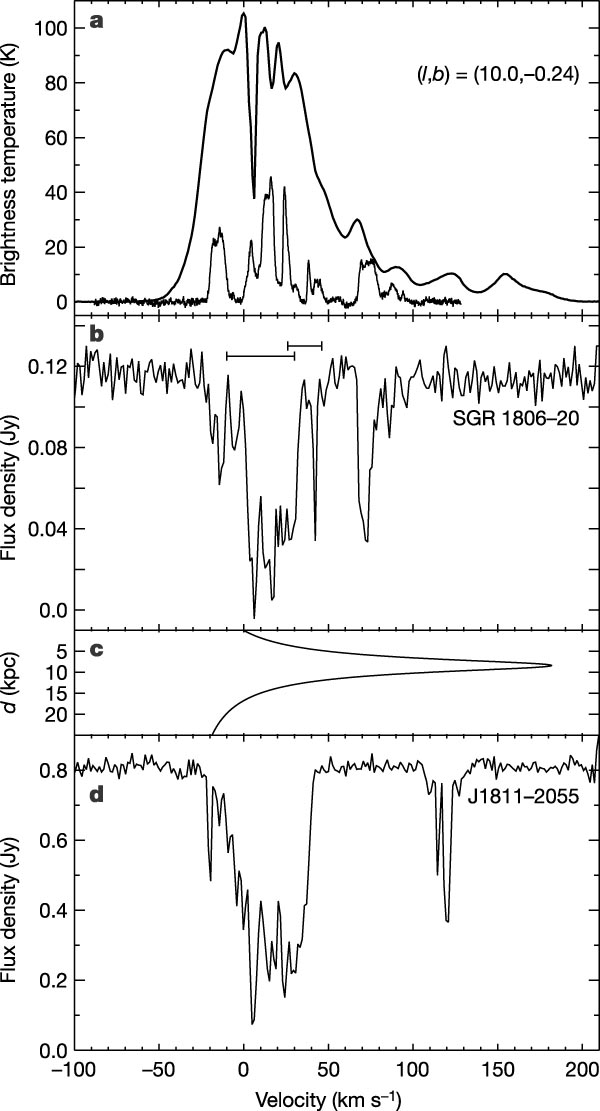
|
The light curve revealed chromatic decay, which means low frequencies decaying slower than high frequencies. Our HI spectroscopy revealed that in contrast to previously estimated distance of 15 kpc, the SGR 1806-20 lies between d=6.4 kpc - 9.8 kpc, i.e. much closer than previously thought. The radio emission in SGR can be described by two components: a rapidly decaying component and a slowly decaying component. The latter becomes detectable when the former has decayed significantly. The rapid decay is phenomenologically similar to that seen from accreting Galactic sources. We make the specific suggestion that the radio emission, up until about two weeks, is a result of the shocking of the debris given off in the explosion (the 'reverse shock'). In this framework, the slowly decaying component is the emission arising from the forward shock as the ejecta slams into the circumburst medium. The figure on the left is cold atomic and moleculer hydrogen spectra towards the SGR. These spectra were used to derive a distance estimate for SGR 1806 - 20. Top panel is the HI emission (upper curve) in the direction of SGR 1806-20, determined by averaging two adjacent spectra. The lower curve is the 12CO spectrum. The middle plot is the H I absorption spectrum taken towards SGR 1806-20. The two horizontal bars illustrate the radial velocity measurementsof the nearby star LBV 1806-20. The absorption spectra were made with the Very Large Array on 4 January 2005. Lower middle plot is the distance as a function of radial velocity adopting a simple Galactic rotation curve. Lower panel is the HI absorption spectrum of nearby extragalactic source J1811-2055. The lower limit to the distance is firmly established to be 6.4 kpc. An upper limit to the distance of the SGR is suggested by the absence of strong absorption at +120 km/s, seen towards J1811-2055 and several other extragalactic radio sources in this direction, which is 10.6 kpc. Our upper limit is not a certainty, but is quite likely. |
Click in boxes below to see some highlights of our research work.
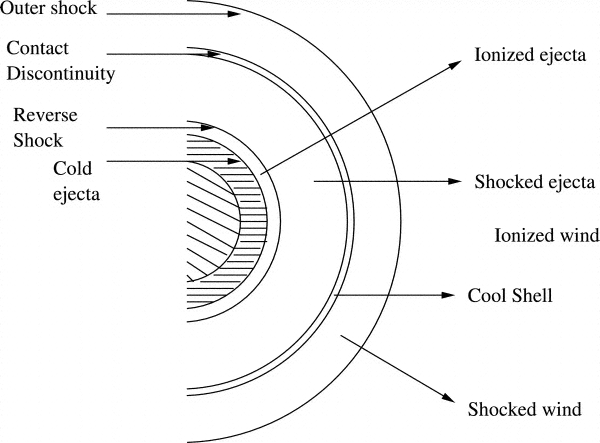
Type IIn supernovae are the most mysterious class of supernovae. Their progenitor stars are a big mystery....
Detail
While reverse shocks are seen in one every 24 optical afterglows of gamma ray bursts, they are much more prevalent in radio afterglows...
Detail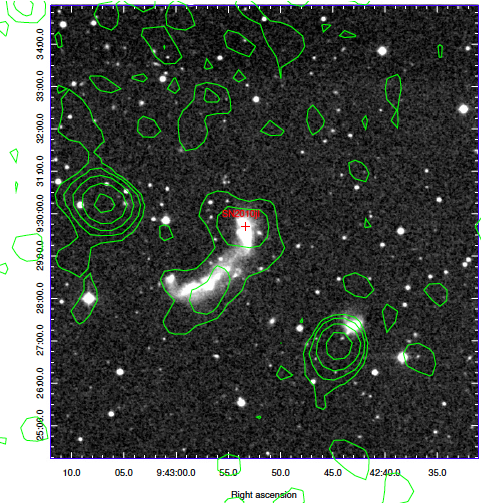
SN 2010jl have revealed a spectacular evolution of the column density from X-ray observations....
Detail
We have studied a catalog of radio afterglow observations of GRBs over a 14 year period from 1997 to 2011...
Detail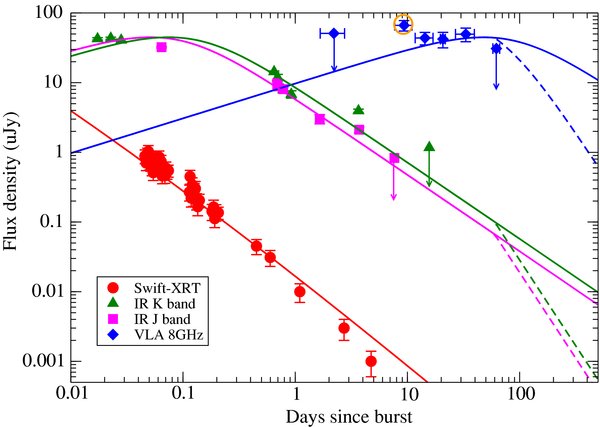
Radio detection of a redshift 8.3 GRB 090423 have revealed the environments of the Universe at such high redshift epochs...
Detail
Inverse Compton scattering can solve the famous mystery of lack of achromatic jet breaks in a subsample of Swift bursts....
Detail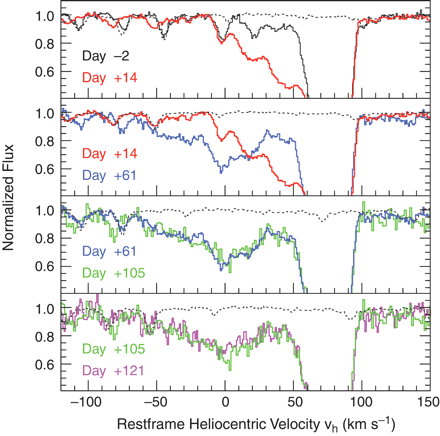
First time spectroscopic evidence of circumstellar matter has been seen in a thermonuclear supernova...
Detail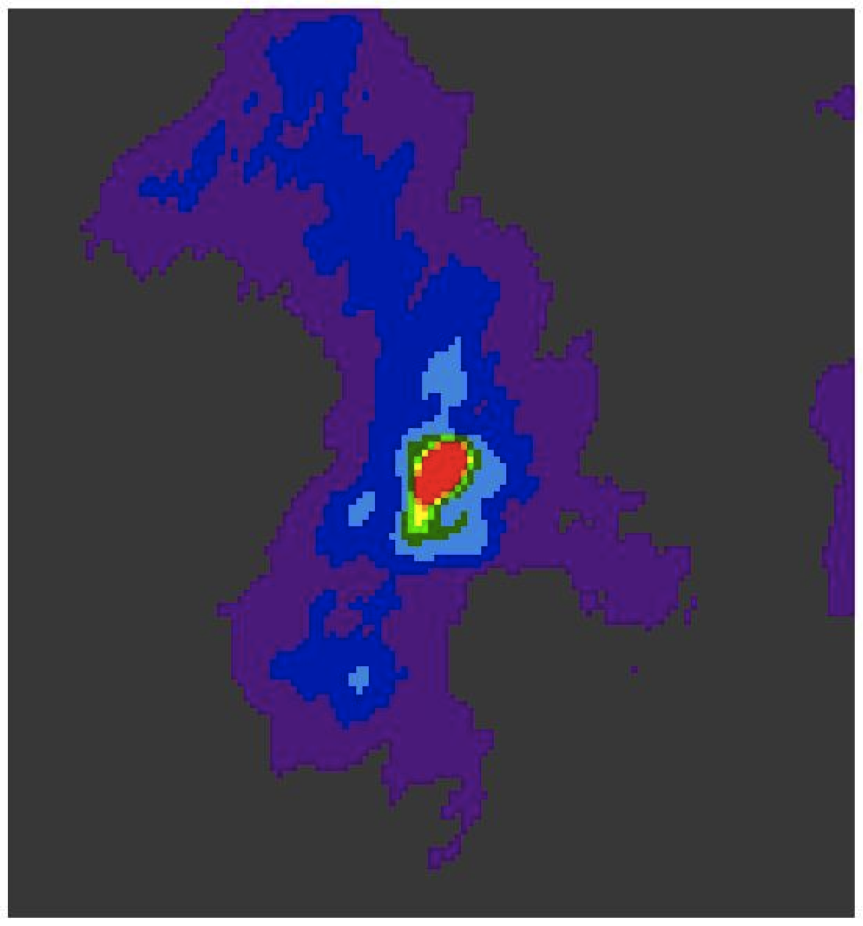
Lowest frequency radio emission at 125 cm has been seen in this most violent Galactic explosion .....
Detail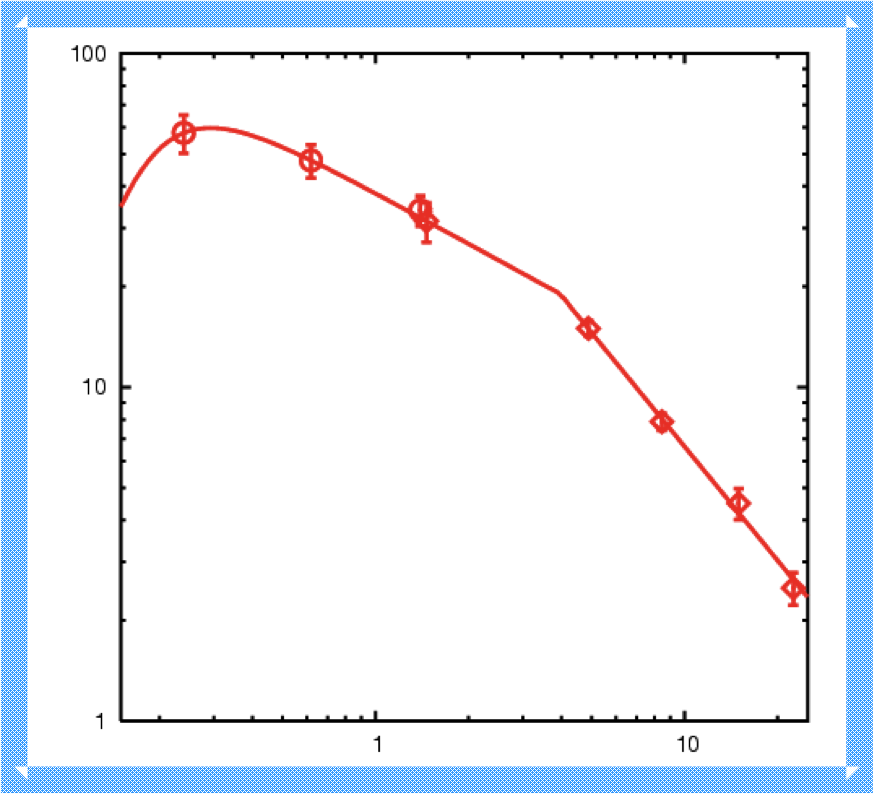
First time direct signature of synchrotron aging was seen in VLA and GMRT observations of SN 1993J.
Detail
